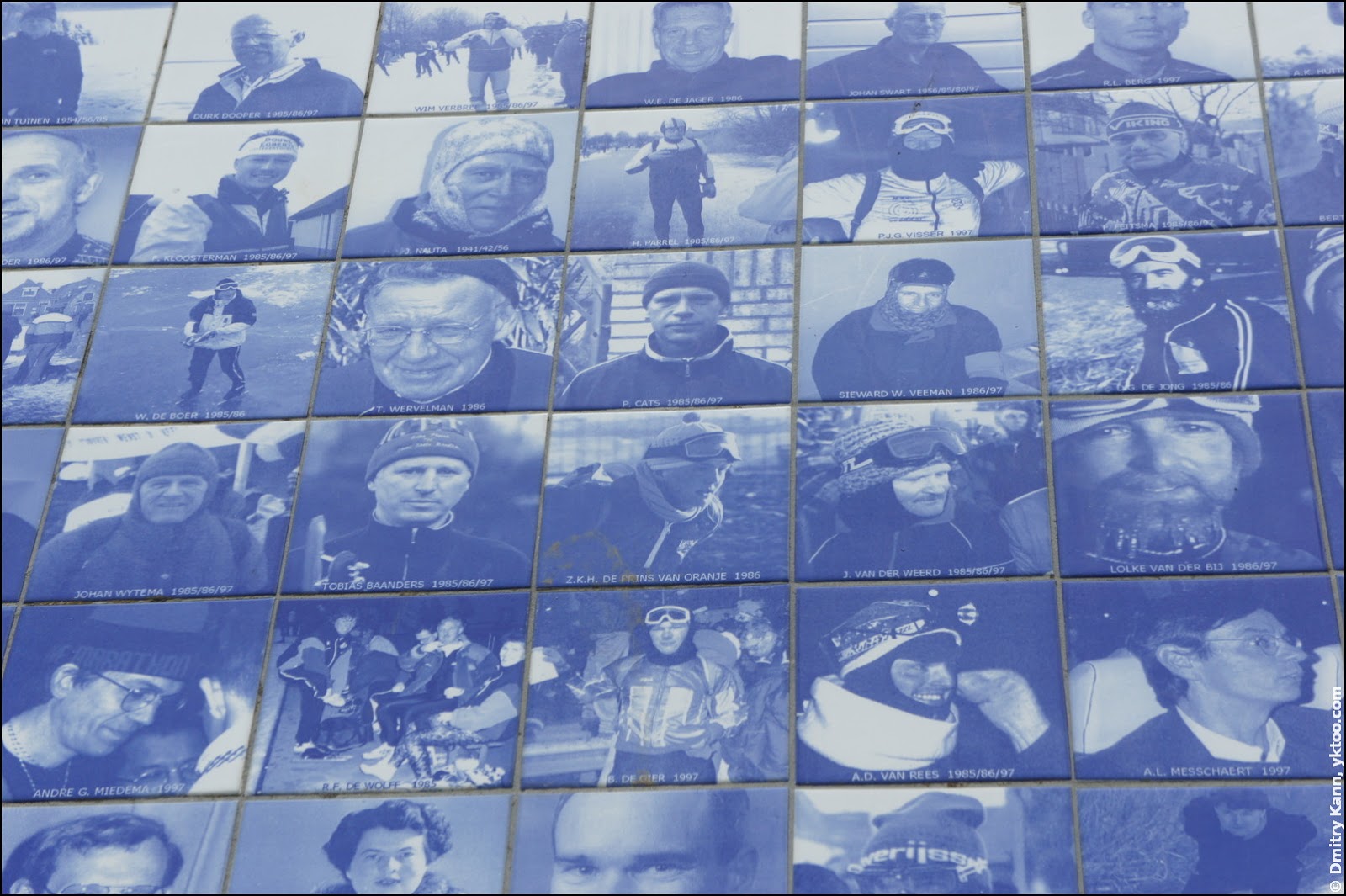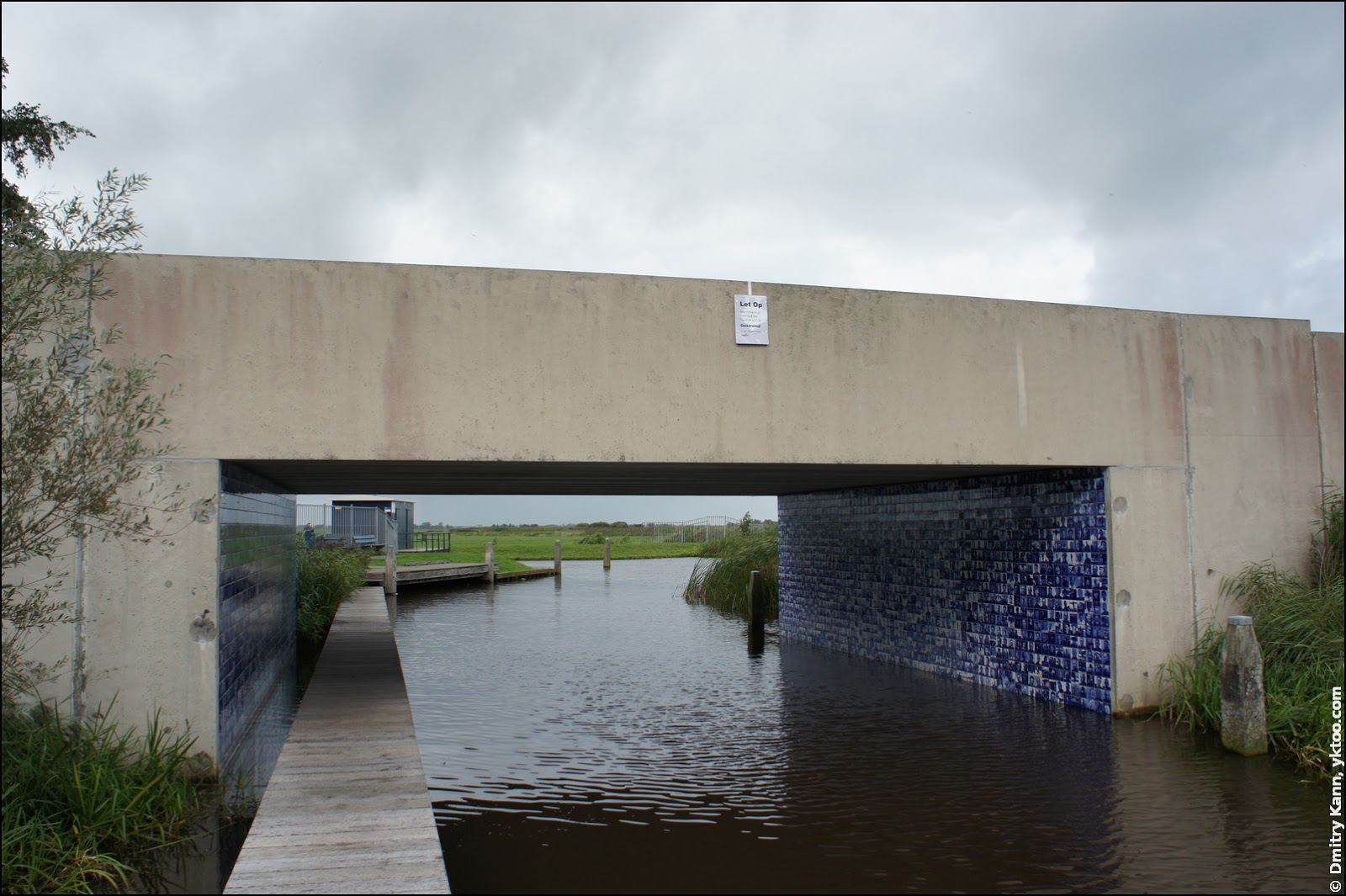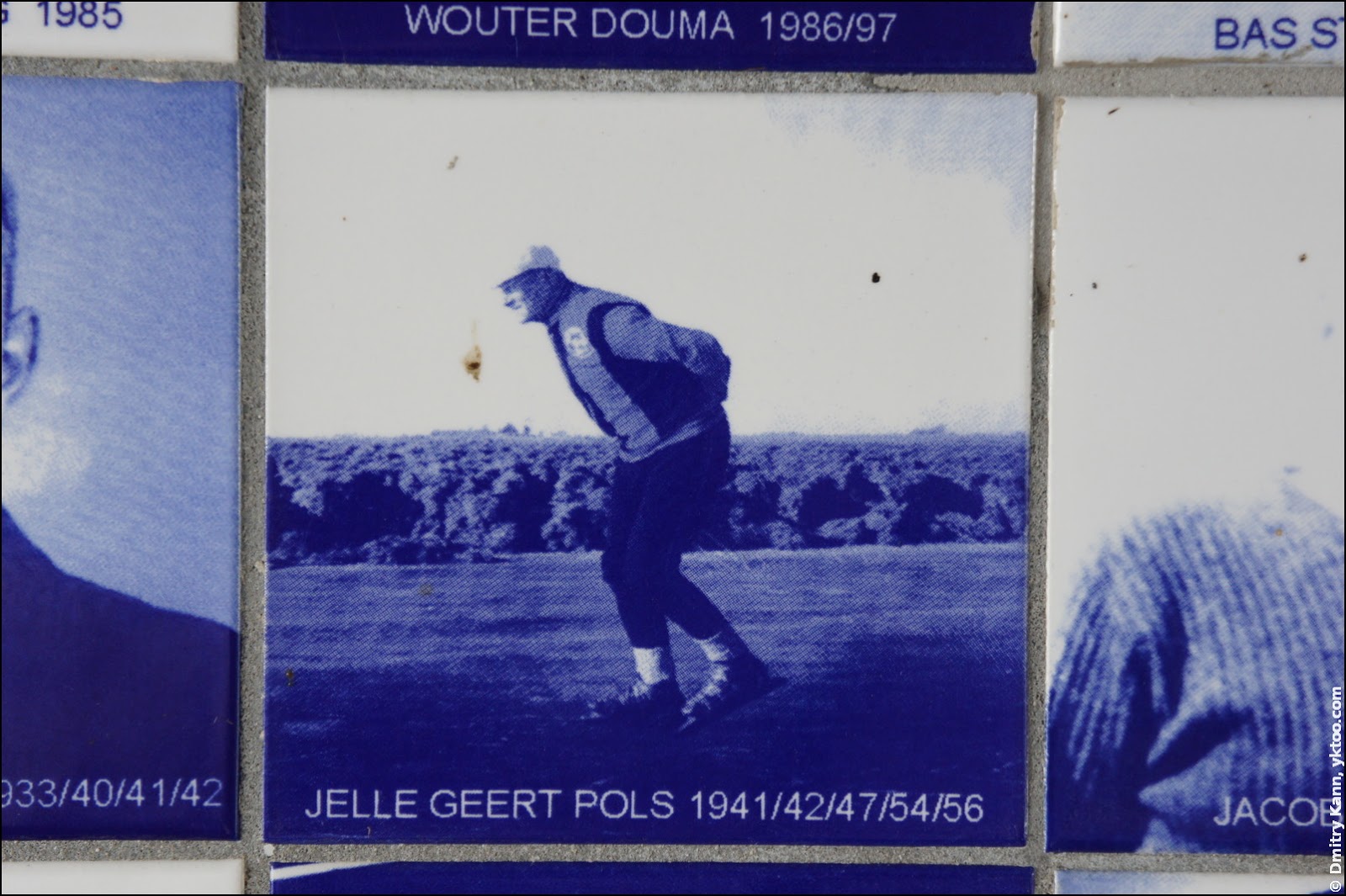Every winter an average Dutch casts glances at the thermometer, hoping for a real cold to come.
The cause for such a strange wish is called Elfstedentocht, or the Eleven cities tour.
Elfstedentocht is a skating match of about 200 kilometres, starting and finishing in Leeuwarden and leading along frozen rivers and lakes past eleven Frisian cities. Therefore for the tour to be possible the minimum ice thickness of 15 cm is required.
The problem is, with our average winter temperature of +7° C it is a bit unlikely to get any ice at all. There are sometimes cold spells with moderate subzero temperatures, but still: the last Elfstedentocht was held in 1997, i.e. eighteen winters ago.
I plan to write a separate post about the tocht, which is, as far as I’m informed, an event of a huge importance for the whole nation (not to mention Friesland). But this story today is about an artefact that is hardly known even to the Dutch.
The monument of Elfstedentocht, Elfstedenmonument, is a bridge over the Murk river (Frisian De Moark) in the neighbourhood of the Giekerk village. This is the last bridge on the route of the skaters heading for the finish in Leeuwarden.
It looks like a regular bridge at a distance, with an ornament of a line of skaters.

But as you come closer, you get to see that it’s made of small tiles, each of which is individually painted. Every sportsman reaching the finish line gets one, labelled with their name and tour dates.
The photo below depicts, among others, Willem-Alexander of the Netherlands in 1986, then a Prince of Orange. The fourth row from the top, in the middle (labelled as Z.K.H. de prins van Oranje):

There is also a short film about his visiting the monument in 2001.
The mere number of tiles is impressive: there are more than seven thousand of them here.

It’s less than the total number of people having finished the run, which is some 16 thousand. But perhaps there are not so many pictures from the early XX century available.
The tour is clearly dominated by men. Professional skaters can cover the two hundred kilometres of ice, depending on the weather conditions, in 7 to 12 hours, but far not everyone is capable of doing that.
The tiles begin at the northern side of the bridge and lead to its inner sides. There’s also a narrow foot-way allowing one to see the bridge from below.

The tiles get deep blue to ultramarine in the sunlight.

The southern side is vacant at the moment, but it’ll get tiled over too, should the weather permit more tours.

Some true hardcore skaters have even participated in multiple editions of the tour.

By the way, I was astonished by the years on that photo. The period between 1941-45 was arguably the hardest in the Soviet history, when the whole country was doing whatever they could to overcome the Nazi. Yet the Dutch seem to have enjoyed that time, what a stark contrast.
Here’s another one:

The Wikipedia page even states the weather was rather favourable in 1941-42.
Errare humanum est, as the Elfstedentocht has been held in 1909 for the first time, in no way Mr. Van Roomen could make it in 1885.

The bottom rows are not that fortunate, covered by the waters of Murk.

When there’s no ice (which is almost always the case), the river is navigable.

And here’s a video of how the monument looks like in the real winter:
I’d like to thank Konstantin of HikeVentures for taking us there.
 — world’s fastest URL shortener
— world’s fastest URL shortener
Comments